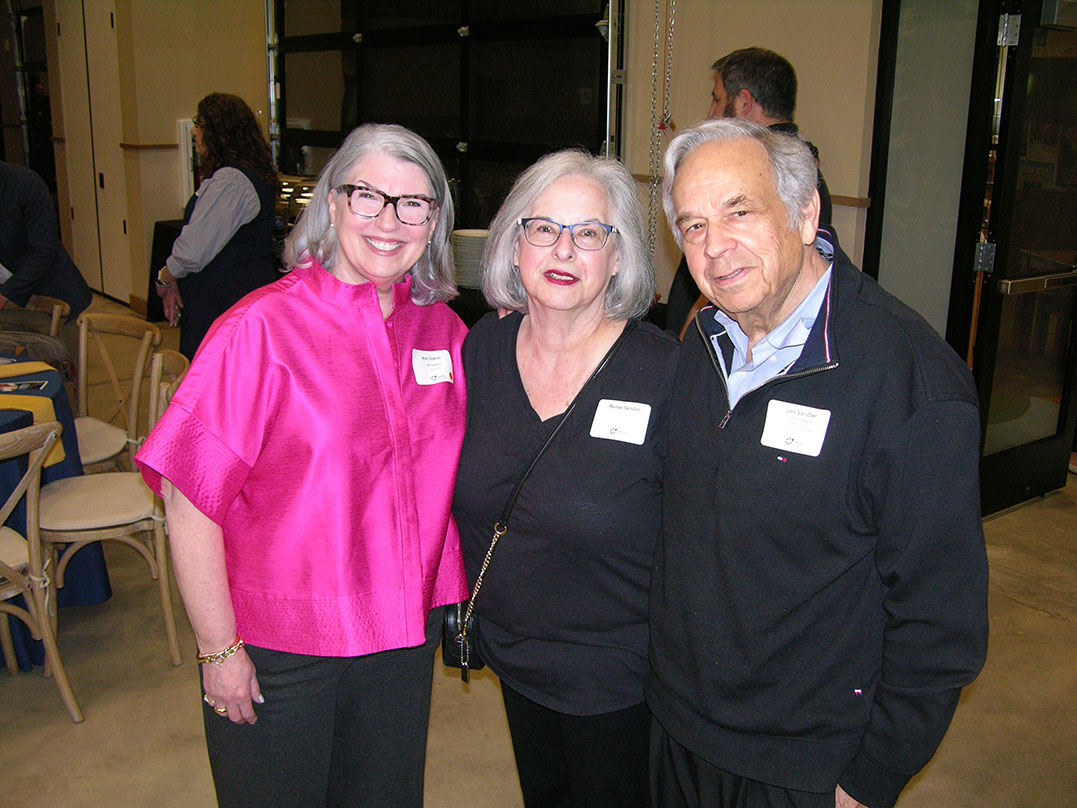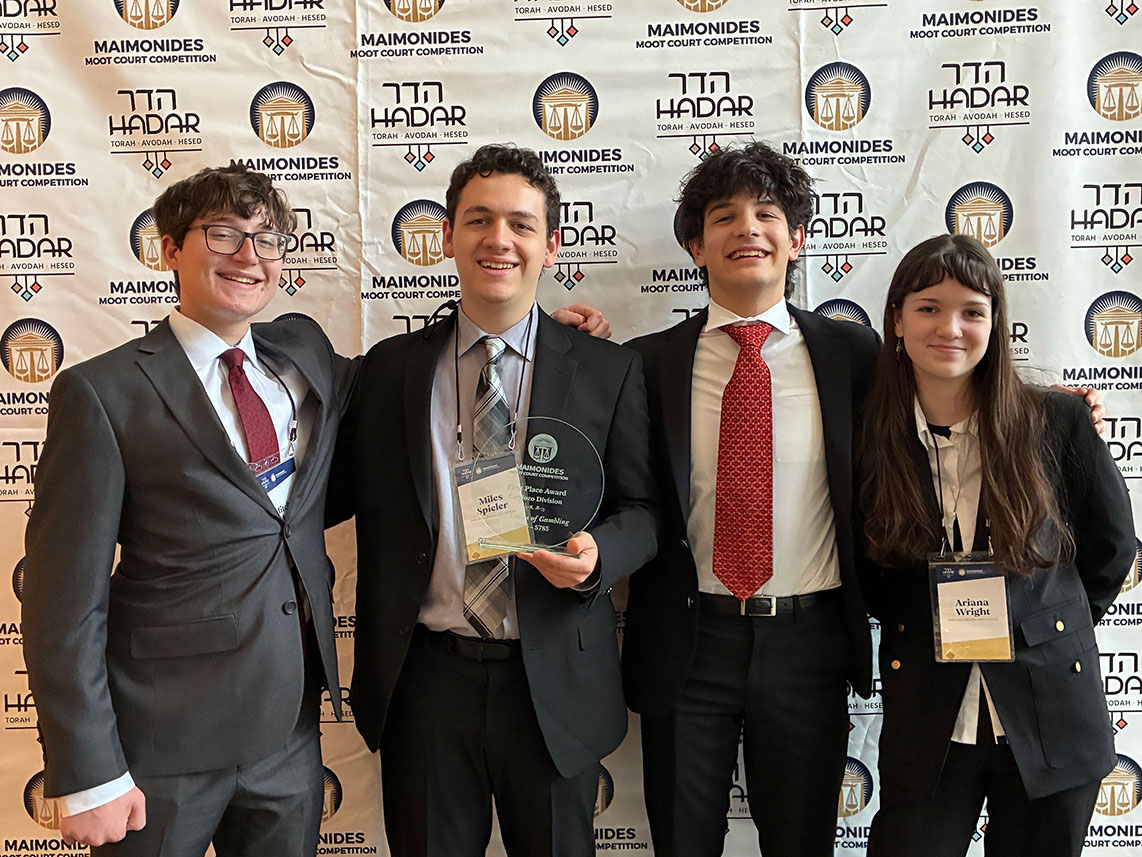By Julia Olson
Assistant Editor
Over 700 people attended the Mayerson JCC’s three productions of Disney’s “Moana Jr.” on June 2nd and 3rd earlier this summer. The play was the most recent in theatre successes put on by the Theatre at the J program, run by Eliana Rantz. “It was a packed house,” Rantz said of the opening production on June 2nd.
Rantz directed and organized the production of “Moana Jr.” Ash Nordman taught choreography, Jeanne Bilyeu and Mark Femia handled the music, and Julia Staat was the stage manager. The entire cast consisted of 39 members.
Rantz started the Theatre at the J program in January of 2022. “Our first production, in May 2022, consisted of two ten-minute scenes, performed by the Everyone’s a Star Class — “Time, What is Time?” and “The Big Lie” by Lindsay Price. The Everyone’s a Star Mini [class] performed the “Breman Town Musicians,” adapted from the folktale by the Grimm Brothers. Since then, our students have performed “Dorothy Meets Alice” by Joseph Robinette, “Aladdin Jr.,” “Big Bad” by Alec Strum, and most recently, “Moana Jr.,” said Rantz. The productions are chosen based on their ability to be performed by younger actors. Rants puts a lot of research into choosing each production. “I read lots of script perusals, analyze the elements, and decide what is best for our program. I try to choose shows that will enable our students to grow as people and performers. I am knee-deep in perusals now, deciding on the play for our fall production,” said Rantz.
After a production is chosen, participants are invited to audition. Different age groups and theatre classes at the J undergo different processes in order to participate in the show. Younger participants from ages 5 to 7 who are members of the Everyone’s a Star Mini class audition as a group, while Rantz and other producers assess their skills and determine how they will fit into the larger production. Older students in the Everyone’s a Star class are ages 8 – 13, and they undergo a more rigorous audition process. “Prior to play auditions, the Everyone’s a Star students receive the character breakdowns and audition sides. They determine what part they would like to audition for — they then come in the space, fill out an audition form and perform their side in front of a panel. They may be asked to read for other roles so we can assess what parts they will excel in,” Rantz said. If the production is a musical, like this summer’s production of “Moana Jr.,” participants must also learn some music and a dance prior to their audition. They then present their lines, music, and dancing to a panel made up of the director, music director, choreographer, and stage manager. Rantz described the complex process of casting as a “giant puzzle.” “For instance, there may be two talented actors suitable for a particular role, yet only one can fulfill another crucial part essential to the play. We can’t have two people play the same part and no one in the other part — so we put each person where we believe they will thrive, keeping in mind the bigger picture of the show. It all needs to fit together. Our program is an educational theatre experience for the actors and the goal is for them to grow and learn no matter what role they are cast in,” she added.
Once the cast is determined, the actors’ work begins. For a musical like “Moana,” rehearsal sessions run from the middle of December through the middle of May. Older participants meet twice a week for one and a half hours, while the younger Mini group meets for one hour a week. The older group often attends the Mini rehearsals as the production nears “so they can collaborate with the students from the younger class,” added Rantz.
Rehearsals are about more than just blocking and learning lines, especially with a robust program like that offered at the J. Rantz stressed the importance of building connections between the cast members. “We start each class with physical, vocal, and energy warmups. Rehearsal is where the magic happens, where ideas are offered and tried. We offer a safe space for our students to explore, take risks, and try new things. It’s an opportunity to watch our actors grow as artists and create. Creating an ensemble is an integral piece of our process. My practice when working with a large cast is to stage the big scenes or songs first and then move on to the smaller later,” Rantz said.
The participants are encouraged to be brave and push themselves. “Witnessing the growth of our performers is thrilling,” added Rantz.
For Rantz, this is just the beginning, and the future is bright for the J’s theatre program.
“My dream is to have a thriving performing arts program that is dynamic, immersive, inclusive, and accessible to all. I would love to have an intergenerational community theatre program that reaches from age 5 through our 60 and Better Center, and beyond. I want to provide performance and participation opportunities for anyone that wants it. I would love to have community theatre productions for all ages and expand our course offerings to include Musical Theatre Audition Workshops, Dance Classes, Scene Study, Tech Theatre, and more. I truly believe that theatre builds connection, belonging, and self-confidence through the development of communication and collaboration skills. Our program allows participants to be their authentic selves through self-exploration and building connection. I want to continue to build on our foundation and foster a robust community theatre program. This program is only two years old and has been building and growing over the past two years. I look forward to all the future opportunities,” said Rantz.
Rantz is currently in the process of choosing a show for the fall. “It’s bound to be a lot of fun,” she adds. If readers of The American Israelite are interested in getting involved in the theatre program at the J, Rantz says organizers are always looking for set decorators and costume designers, as well as help at the performances. Those interested can find more information on the Theatre at the J website.





